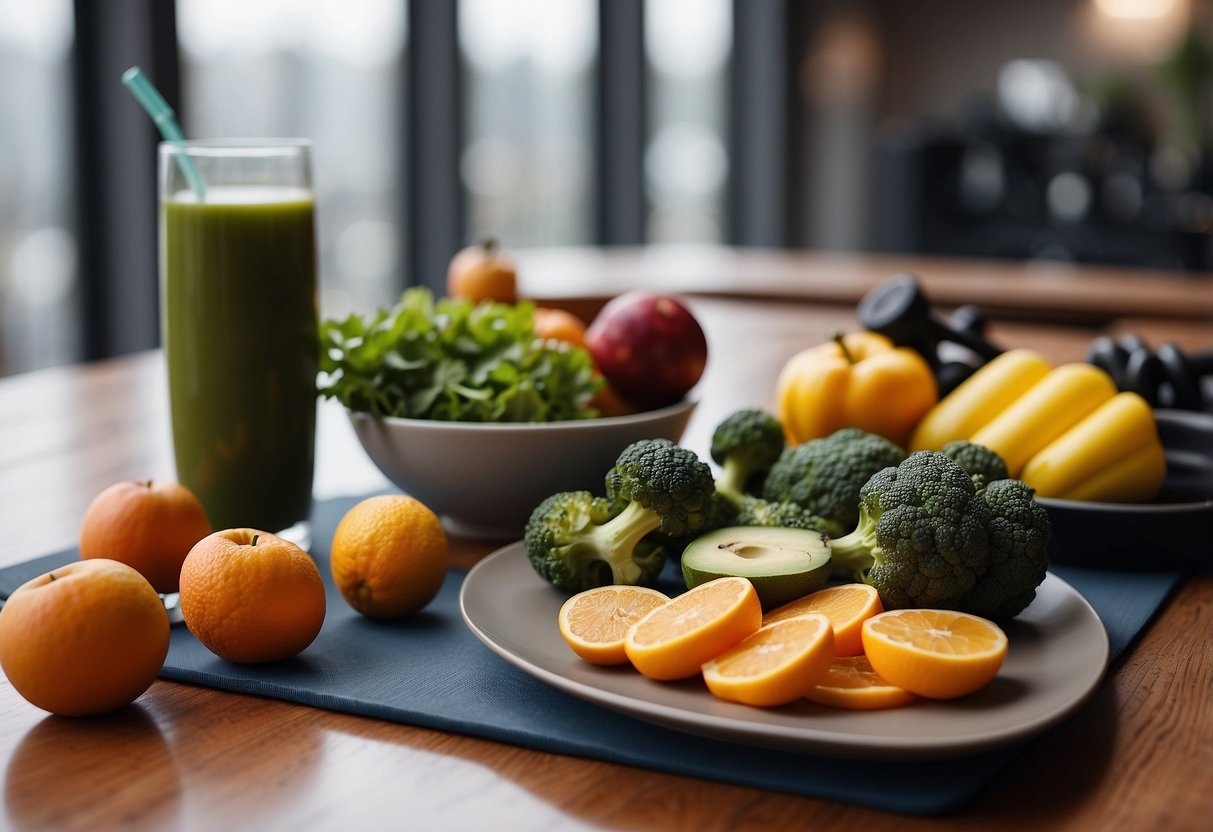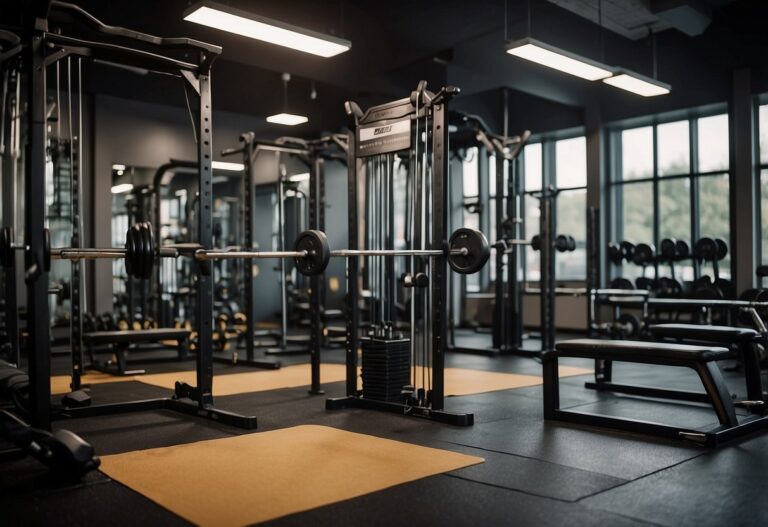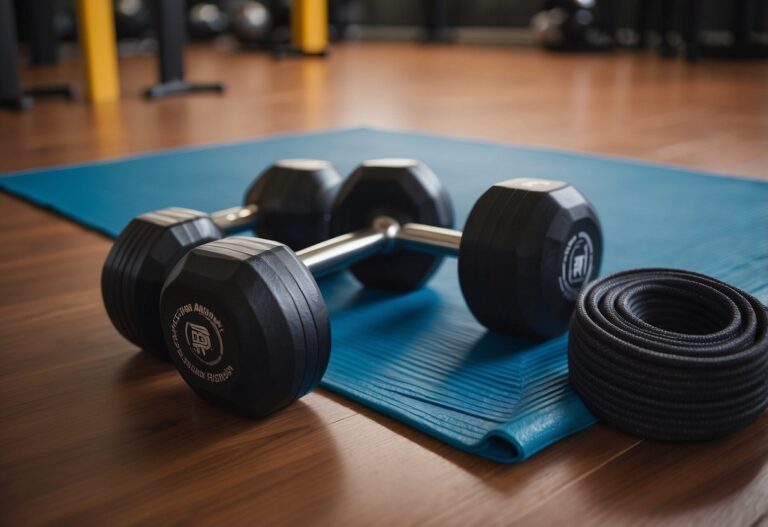Starting a new diet and fitness routine can feel overwhelming, but it doesn’t have to be. What are the best tips for balancing diet and exercise to achieve your goals? This article aims to break down practical ways you can take charge of your health and fitness without feeling lost.

Whether you’re looking to lose weight, gain muscle, or just maintain a healthy lifestyle, incorporating balanced diet choices and effective workout strategies is key. Discovering how to sync your nutrition with your fitness schedule can make a significant difference in your results. Get ready to learn some straightforward tips and advice to help you on your journey.
Incorporate HIIT into your routine
Adding High-Intensity Interval Training (HIIT) to your workout can boost your fitness journey. HIIT is flexible and can be done using various exercises like running, cycling, or bodyweight workouts. This makes it a great way to keep your routine fresh and engaging.
Start with a simple plan. You can aim for 2-3 HIIT sessions per week. These can be short yet effective, fitting into a busy schedule. For instance, a session could be 20 minutes long, mixing high-intensity bursts with short rest periods.
Tracking your progress is crucial. Keep a log of your workouts and make adjustments as needed. This helps you see improvements and stay motivated.
Prevent injuries by ensuring you warm up before and cool down after your sessions. Listen to your body and rest when necessary. Aim to mix up your exercises to target different muscle groups and avoid overuse injuries.
HIIT can help enhance your metabolism and burn calories efficiently. It’s perfect for those looking to get results without spending hours in the gym. Give it a try and see how it fits into your routine.
For more tips, check out this helpful guide on ultimate HIIT workouts.
Opt for Whole Grains over Refined Grains
When choosing grains, it’s better to go for whole grains rather than refined grains. Whole grains keep all parts of the grain, which means they have more nutrients and fibre. This can support better digestion and help keep you full longer.
Refined grains, on the other hand, have the bran and germ removed. This process leaves you with a grain that is mostly just starch, which can cause quick spikes in blood sugar. Choosing whole grains instead could help you maintain steady energy levels throughout the day.
Try swapping white bread for whole-grain options, or using brown rice instead of white. It’s a simple change that can have a big impact on your diet.
Stay Hydrated with Water Throughout the Day
Keeping hydrated is essential for your overall health. You might think drinking water is straightforward, but it can sometimes be challenging to remember.
Start your day with a glass of water to jumpstart your hydration. It can help you feel more awake and ready for the day ahead.
Carrying a reusable water bottle is a great way to ensure you drink enough water. It’s more convenient and reduces plastic waste.
Try adding slices of fruit, veggies, or herbs to your water. This can make it more enjoyable and encourage you to drink more.
Eating foods with high water content, like fruits and vegetables, also helps keep you hydrated. Options like watermelon and cucumbers are delicious and hydrating.
Make a habit of drinking a glass of water before each meal. This simple routine can help you maintain regular hydration throughout the day.
Set reminders on your phone or use an app to track your water intake. This can be especially helpful if you have a busy schedule.
Drinking water can be fun when you use a favourite water bottle. Personalising your bottle can motivate you to drink more and stay hydrated.
Include Lean Proteins and Green Vegetables

Adding lean proteins and green vegetables to your diet is key for building muscle and staying healthy. Lean proteins like chicken, turkey, and salmon are excellent sources of nutrients without the extra fat. They help build and repair tissues, which is essential after a good workout. Try including turkey or chicken with the skin removed in your meals. For a seafood option, salmon is great.
Green vegetables offer a range of vitamins and minerals. Spinach, for example, is a complete protein source and can fit into many dishes. You can toss it into a smoothie to boost your protein intake. Green peas are also versatile and packed with vitamin A and K.
You can make an energising meal by combining chickpeas, Brussels sprouts, and sweet potatoes, which is both vegetarian and vegan-friendly. This simple mix provides you with a balance of protein and essential nutrients for your diet.
Including these foods regularly can help you maintain a balanced, nutritious diet while supporting your fitness goals.
Practise mindful eating during meals
Mindful eating can help you enjoy your meals more and reduce overeating. First, take at least 20 minutes to eat your meal. This gives your brain time to signal that you are full.
Put away your phone and other distractions. Engage your senses by noticing the smells, textures, and flavours of your food. Taking small bites and chewing thoroughly are key actions. Identify ingredients as you chew, which makes eating more engaging.
Try portioning out snacks to prevent mindless munching. Chewing well also improves digestion. Practising these habits can transform your meals into more enjoyable and healthier experiences.
Use Portion Control to Manage Calorie Intake
Controlling your portions can be a great way to manage your calorie intake. This doesn’t mean you have to eat tiny portions or count every pea on your plate. Instead, think about using smaller plates. Studies show that people tend to eat less when they use smaller dishes.
Another simple trick is to eat slowly. It takes about 20 minutes for your body to realise it’s full. By slowing down, you might find yourself eating less and feeling more satisfied.
Keeping a food journal can also help. Writing down everything you eat and drink increases your awareness of portion sizes. This can make it easier to adjust them to meet your goals.
You can also try portioning out snacks into smaller containers rather than eating directly from the bag. This way, you’re less likely to overconsume without realising it.
These small changes can make a big difference in managing your calorie intake. By paying attention to portion sizes, you can take a big step towards your health and wellness goals.
Ensure Consistent Sleep Patterns

Maintaining regular sleep patterns can vastly improve your overall health. Try to go to bed and wake up at the same time every day, even on weekends. This helps your body’s internal clock stay in sync.
Avoiding caffeine and heavy meals before bed can help you fall asleep more easily. Instead, opt for a light snack or a warm drink like herbal tea.
Creating a relaxing bedtime routine is also crucial. Engage in calming activities such as reading or listening to soft music. This signals to your body that it’s time to wind down.
Avoid Sugary Drinks and Snacks
Cutting down on sugary drinks and snacks is essential for maintaining good health and energy levels. Drinks like regular cola, fruit punch, and lemonade are high in sugar. For example, a can of regular cola contains 7 teaspoons of sugar.
Switch to water or unsweetened beverages. Your body prefers plain water to stay hydrated. If you enjoy flavoured drinks, try mixing sweetened and unsweetened iced teas.
Eating less sugar not only helps with weight management but also reduces the risk of health problems like diabetes. Replace sugary snacks with fruits, nuts, and other whole foods. By choosing protein-rich foods, such as meat, fish, and eggs, you can curb sugar cravings effectively.
Include stretching in your workout regime
Adding stretching to your workout routine is crucial for improving flexibility and reducing muscle stiffness. It helps with better posture and balance.
Stretching increases blood flow to muscles, which can aid in recovery. Try simple stretches like touching your toes or arm circles as part of your warm-up or cool-down.
Static stretches, where you hold a position for 20-30 seconds, can also be beneficial. For instance, sit with the bottoms of your feet together and gently press your knees down with your elbows. This helps to open up your hips and relieve tension.
Alternate Strength Training With Cardio
When you alternate strength training with cardio, it’s like giving your body a balanced workout diet.
Start by planning your week with a mix of both. You might do strength workouts on Tuesdays and Thursdays, and focus on cardio on Mondays, Wednesdays, and Fridays. This routine helps you build muscle while working on your heart health.
Think about your goals. If you’re aiming to lose weight, try adding an extra cardio day. But remember, mixing high and low-intensity workouts can prevent burnout and overtraining, keeping you motivated.
Use circuit training to blend both. You can do 45 seconds of a strength exercise followed by 30 seconds of cardio. Repeat this cycle for three rounds.
Would you rather alternate days or mix both in one session? Either way, keep pushing your limits while taking care of your recovery days.
Understanding Macronutrients
Learning about macronutrients—proteins, carbohydrates, and fats—can help you improve your diet and overall health. Each macronutrient plays a crucial role in providing energy and supporting various body functions.
Proteins
Proteins are essential for muscle growth, repair, and overall body function. They are made up of amino acids, which are the building blocks of body tissue.
You should aim to consume 0.7-1 gram of protein per pound of body weight each day. This helps maintain and build muscle. For example, if you weigh 150 pounds, your daily protein intake should be between 105 and 150 grams.
Good sources of protein include lean meats, fish, egg whites, legumes, and tofu. Consuming a variety of these foods ensures that you get all the essential amino acids your body needs. Including protein in every meal can help with feeling full and maintaining a healthy weight.
Carbohydrates
Carbohydrates are your body’s main energy source. They are broken down into glucose, which fuels your muscles and brain.
Your carbohydrate needs depend on your activity level and fitness goals. For a 2,000-calorie diet, the typical recommendation is that around 40% of your intake should come from carbs. That’s about 200 grams a day.
Focus on whole grains, fruits, vegetables, and legumes. These foods provide essential nutrients and fibre that help with digestion and keeping blood sugar levels stable. Try to limit highly processed carbs like sugary snacks and white bread, as these can lead to energy crashes and weight gain.
Fats
Fats are vital for absorbing vitamins, protecting your organs, and maintaining cell membranes. It’s important to include healthy fats in your diet without overdoing it.
You might aim for about 30% of your daily calories from fat. For a 2,000-calorie diet, that’s roughly 67 grams a day. Prioritise unsaturated fats found in foods like olive oil, avocados, nuts, and seeds. These fats support heart health and can reduce inflammation.
Avoid excessive intake of saturated and trans fats, often found in fried foods, processed snacks, and baked goods. These fats can increase the risk of heart disease and other health issues.
Understanding how much of each macronutrient you need and where to find them can help you create balanced meals. This can support both your fitness goals and overall well-being.
Creating a Balanced Meal Plan
Creating a balanced meal plan involves paying attention to portion control and the timing of your meals. These aspects ensure you get the right nutrients without overeating or missing out on essential food groups.
Portion Control
Portion control is critical for maintaining a balanced diet. By managing the amount of food you eat, you can avoid overeating and ensure you’re getting enough nutrients without overloading on calories. One useful method is to use your hand as a guide:
- Protein: A portion should be the size of your palm.
- Vegetables: Aim for two handfuls.
- Carbohydrates: A portion should be the size of your fist.
- Fats: Limit to the size of your thumb.
This approach makes it easier to visualise appropriate serving sizes. You can also use smaller plates to help with portion sizes. This simple trick can make your portions look more substantial, which might help if you’re trying to reduce calories.
Additionally, pay attention to food labels. Look at serving sizes and nutritional information to better understand what you’re consuming. Remember, portion control doesn’t mean depriving yourself, but rather enjoying your meals in moderation.
Timing of Meals
Timing your meals can influence your energy levels and metabolism. Eating at regular intervals helps keep your metabolism steady and can prevent overeating. Aim for three main meals and two snacks per day.
Breakfast, often called the most important meal, should be eaten within an hour of waking up. A balanced breakfast might include whole grains, protein, and healthy fats, like Greek yogurt with granola. This combination can keep you feeling full longer and less likely to snack on unhealthy foods.
Lunch should be lighter than dinner but still substantial enough to keep you going through the afternoon. For example, a whole-grain sandwich with lean meat, lots of vegetables, and a side of fruits can be very effective.
Dinner should be consumed a few hours before bedtime to give your body time to digest. A balanced dinner often includes lean proteins, whole grains, and plenty of vegetables.
By spreading your meals and snacks throughout the day, you maintain energy levels and reduce the temptation to overeat at any one sitting.
Effective Workout Strategies
To get the most out of your workouts, it’s essential to focus on strength training, cardio exercises, and flexibility and mobility. Each area plays a crucial role in ensuring that you achieve a well-rounded fitness routine.
Strength Training
Strength training helps you build muscle and improve your endurance. You should aim to do strength workouts at least two times a week. Focus on compound exercises like squats, deadlifts, and bench presses. These exercises work multiple muscle groups at once, making them very efficient.
Incorporate weights gradually to avoid injury. Start with lighter weights and slowly increase the load. Tracking your progress helps keep you motivated. It’s also vital to balance your training by working on both upper and lower body muscles. Resistance bands and bodyweight exercises can be great alternatives if you’re not into lifting heavyweights.
Cardio Exercises
Cardio exercises improve heart health and help burn calories. You should aim to get at least 150 minutes of moderate-intensity or 75 minutes of high-intensity cardio each week. Some great options include running, cycling, swimming, and even dancing.
Mix up your routine to keep things interesting and avoid plateauing. Interval training, where you alternate between high and low-intensity exercises, can be particularly effective. For example, try sprinting for 30 seconds, then walking for a minute. This type of training not only helps in burning more calories but also improves your cardiovascular endurance faster.
Flexibility and Mobility
Flexibility and mobility exercises keep your muscles and joints limber, reducing the risk of injury. These exercises should be performed daily or at least every time you work out. Stretching exercises, yoga, and Pilates are excellent choices for enhancing flexibility.
Focus on dynamic stretches before your workout to get your muscles warmed up. Post-workout, engage in static stretching to aid in muscle recovery. A simple routine could include hamstring stretches, calf stretches, and shoulder stretches. Regularly practicing these exercises can improve your range of motion and enhance your overall workout performance.
Remember to listen to your body; never push yourself to the point of pain. Incorporating these exercises into your routine will make your workouts more effective and enjoyable.







